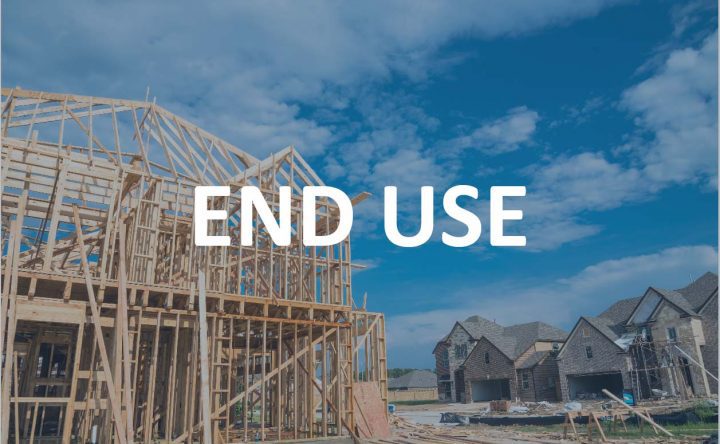Statistics Canada (StatsCan) reported today (1-19-22) that the Canadian Consumer Price Index (CPI) increased 3.4% on an annual average basis in 2021. This is the fastest pace since 1991 (+5.6%) and it follows a 0.7% increase in 2020. Excluding energy, the annual average CPI rose 2.4% in 2021 — a faster pace than the 1.3% recorded in 2020 and 2.3% in 2019. While annual average growth was 3.4% in 2021, price growth differed between the first half and second half of the year.
News in end use
Increasing Home Prices Continue to Inhibit Renters From Becoming Homeowners
According to a recent study conducted by realtor.com, last year’s cost hikes in the price of new and existing homes for sale eliminated nearly one million renters from the ranks of potential homeowners. The study reports that the income a household needs to pay a mortgage for a median-price home climbed to $ 62,872 in 2021, up from $55,186 in 2020.
With Millennials Leading the Charge, Demand Continues to Drive the Housing Market Higher
Mark Fleming, First American’s chief economist said, “Potential home sales measures what the healthy market level of home sales should be based on economic, demographic, and housing market fundamentals. One of the most consistent drivers of housing market potential over the last year has been new household formation. Millennials are the largest generation in U.S. history, and the bulk of them are aging into their prime home-buying years.”
Mortgage Applications Increase for Second Consecutive Week During the Week Ending January 14, 2022
According to data from the Mortgage Bankers Association’s (MBA) Weekly Mortgage Application Survey (WMAS), for the week ending January 14, 2022, the Market Composite Index — a measure of mortgage loan application volume — increased 2.3% on a seasonally adjusted basis from one week earlier. On an unadjusted basis, the Index increased 3% compared with the previous week. The Refinance Index decreased -3% from the previous week and was -49% lower than the same week one year ago.
Canadian Housing Starts Drop -22% from November to December
According to the Canadian Mortgage and Housing Corporation (CMHC), the trend in housing starts was 260,567 units in December, down from 267,606 units in November. This trend measures a six-month moving average of the monthly seasonally adjusted rates of housing starts in Canada. The standalone monthly SAAR of housing starts for all areas in Canada was 236,106 units in December, a decline of -22% from 303,813 units in November.
Home Sales Decline Month-Over-Month and Year-Over-Year in December
Redfin reported on Friday (1-14-22) that there were fewer homes than ever available for sale in December. This drove seasonally adjusted home sales down -3.6% from November and -11% when compared to December 2020 — the largest month-over-month sales decline since May 2020. On the other hand, home prices surged 15% higher year-over-year, marking the 17th consecutive month of double-digit home price increases.
Canadian Home Sales and Prices Push Higher in December
According to statistics released on Monday (1-17-22) by the Canadian Real Estate Association (CREA), home sales recorded over Canadian MLS® Systems edged up 0.2% between November and December 2021. The small increases in November and December followed on the heels of a 9% increase in activity in October. This places sales in Q4 2021 between the highs and lows seen earlier in the year. The actual (not seasonally adjusted) number of transactions in December 2021 came in -9.9% below the record for December, which was set in December of 2020.
Builder Sentiment Declines in January on Inflation Concerns
On Tuesday (1-18-22), The National Association of Home Builders (NAHB)/Wells Fargo Housing Market Index (HMI) reported that builder sentiment in the market for newly built single-family homes edged 1-point lower in January to a reading of 84. The HMI has hovered between 83 and 84 for the past three months, the same rate it was at in the spring of 2021. Builder confidence topped at a level of 90 in November 2020.
Canadian Real GDP for Natural Resource Sector Increased in Q3 2021 — Forestry Sector Sole Decline
Statistics Canada (StatsCan) reported on Friday (1-14-22) that the real gross domestic product (GDP) for the natural resource sector increased 2.9% in Q3 2021. The natural resources sector real GDP has now surpassed pre-pandemic levels, recovering from the -11.1% drop in Q2 of 2020.
Monthly Construction Input Prices Rise in December
According to analysis provided by the Associated Builders and Contractors (ABC) regarding the U.S. Bureau of Labor Statistics’ (BLS) December Producer Price Index, construction input prices rose 0.6% in December when compared to November. Nonresidential construction input prices also increased 0.6% for the month.



